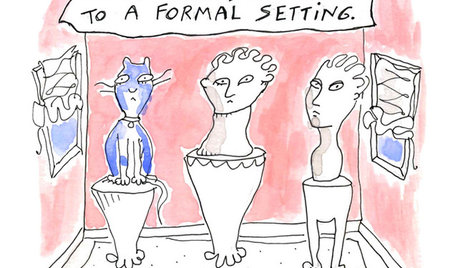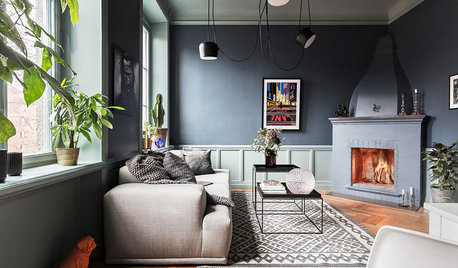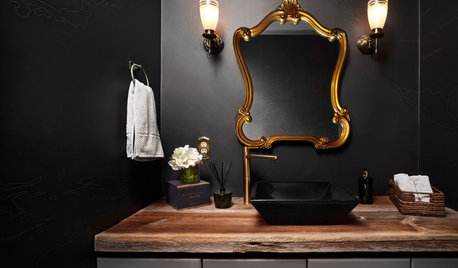Black Velvet Alocasia Help
pumapardus
13 years ago
Related Stories

DECORATING GUIDESFigured Velvet Piles On a Luxurious Look
When is it enviable to be a little loopy? When the loops comprise a gorgeously textured fabric like this one
Full Story
MOST POPULAR7 Ways Cats Help You Decorate
Furry felines add to our decor in so many ways. These just scratch the surface
Full Story
REMODELING GUIDESRoom of the Day: Antiques Help a Dining Room Grow Up
Artfully distressed pieces and elegant colors take a formerly child-focused space into sophisticated territory
Full Story
COLOR11 Reasons to Paint Your Ceiling Black
Mask flaws, trick the eye, create drama ... a black ceiling solves a host of design dilemmas while looking smashing
Full Story
COLORWake Up Your Woodwork With Black
Strike a dramatic note with black window frames, shelves, stairs and more, making features stand out or blend in
Full Story
COLORHow to Add Just the Right Amount of Dramatic Black
Done right, black can add punch and personality to just about any room. Here’s how to go over to the dark side in style
Full Story
DECORATING GUIDESWhat Goes With Black Walls?
Once seen only in teenagers’ bedrooms, black these days is chic and showing up everywhere. Learn which colors are its perfect partners
Full Story
FLOORSDrama’s Afoot With Striking Black Floors
Be bold. Be brave. Drench your floors in black for a memorable interior scene
Full Story
BATHROOM DESIGN11 Smashing Black Bathrooms
Going dark in the bath amps up the drama and lets metallic finishes shine
Full Story
BLACKHollywood Glamour In Black, White and Red
The Ultimate Bold and Light Colors Create Drama Together
Full StoryMore Discussions









tapla (mid-Michigan, USDA z5b-6a)
pumapardusOriginal Author
Related Professionals
Oatfield Landscape Architects & Landscape Designers · Manchester Landscape Contractors · Arden-Arcade Landscape Contractors · Cornelius Landscape Contractors · Federal Way Landscape Contractors · Fuquay-Varina Landscape Contractors · Long Branch Landscape Contractors · Merced Landscape Contractors · Nanuet Landscape Contractors · Salem Landscape Contractors · Santa Ana Landscape Contractors · White Bear Lake Landscape Contractors · Shenandoah Landscape Contractors · New Providence Interior Designers & Decorators · Fish Hawk Handymanjane__ny
tapla (mid-Michigan, USDA z5b-6a)
pumapardusOriginal Author
tapla (mid-Michigan, USDA z5b-6a)